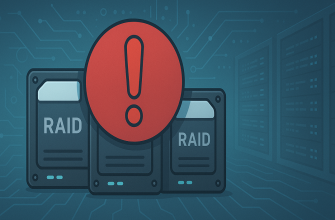- Proxmox: The Versatile Alternative to VMware and Hyper-V?
- What Is Proxmox?
- Why Are Companies Considering Proxmox?
- 1. No Licensing Fees
- 2. All-in-One Platform
- 3. Web-Based UI and CLI Control
- 4. High Availability and Clustering
- 5. Built-In Backup and Restore
- How Does Proxmox Compare?
- Downsides of Proxmox
- Final Verdict: Is Proxmox the Universal Alternative?
Proxmox: The Versatile Alternative to VMware and Hyper-V?
As businesses seek cost-effective and flexible virtualization solutions, Proxmox Virtual Environment (Proxmox VE) is gaining serious traction. But can this open-source platform truly stand as a universal alternative to VMware and Hyper-V?
What Is Proxmox?
Proxmox VE is a powerful open-source virtualization management platform that integrates KVM-based virtualization, LXC containers, software-defined storage, and networking in a single web-based interface. It’s widely appreciated for its simplicity, transparency, and enterprise-grade features—without the hefty licensing fees.
Why Are Companies Considering Proxmox?
1. No Licensing Fees
VMware and Hyper-V come with significant licensing costs. Proxmox, on the other hand, is free to use, with optional paid support. For startups and small businesses, this is a game-changer.
2. All-in-One Platform
Proxmox combines containerization (LXC) and full virtualization (KVM) in one system. You can run Linux and Windows VMs alongside lightweight containers, all managed from the same dashboard.
3. Web-Based UI and CLI Control
Its web interface is intuitive, yet powerful. For advanced users, Proxmox also supports full command-line control, REST APIs, and integration with automation tools like Ansible and Terraform.
4. High Availability and Clustering
Proxmox supports cluster management, live migration, and high availability, similar to what you’d find in enterprise-grade solutions.
5. Built-In Backup and Restore
The built-in backup system allows scheduled backups, snapshots, and easy restores. It’s integrated with ZFS, one of the most reliable file systems for managing redundancy and data integrity.
How Does Proxmox Compare?
| Feature | Proxmox VE | VMware vSphere | Microsoft Hyper-V |
|---|---|---|---|
| Cost | Free/Open-source | Paid (per CPU) | Windows Server license required |
| Virtualization | KVM + LXC | ESXi (bare-metal) | Hyper-V |
| Web Interface | Yes (built-in) | Yes (vCenter) | Yes (Windows Admin Center) |
| Live Migration | Yes | Yes | Yes |
| Cluster Support | Yes | Yes | Limited |
| Backup Integration | Built-in (ZFS, etc) | Veeam/3rd party | Windows Backup/3rd party |
| Community Support | Active | Limited (Enterprise-focused) | Moderate |
Downsides of Proxmox
- Learning Curve: For those used to VMware or Hyper-V, Proxmox may require some initial adaptation.
- Enterprise Support: While paid support exists, it may not match the level of enterprise service VMware offers.
Final Verdict: Is Proxmox the Universal Alternative?
Yes—depending on your needs.
For organizations that value flexibility, cost-efficiency, and open-source tools, Proxmox VE is a strong contender. It’s not only a viable alternative but often preferred by developers, sysadmins, and small to mid-sized businesses.
As VMware’s licensing model continues to shift, and with growing frustration over vendor lock-in, Proxmox emerges as a serious player—one that delivers core virtualization features with freedom and control.









